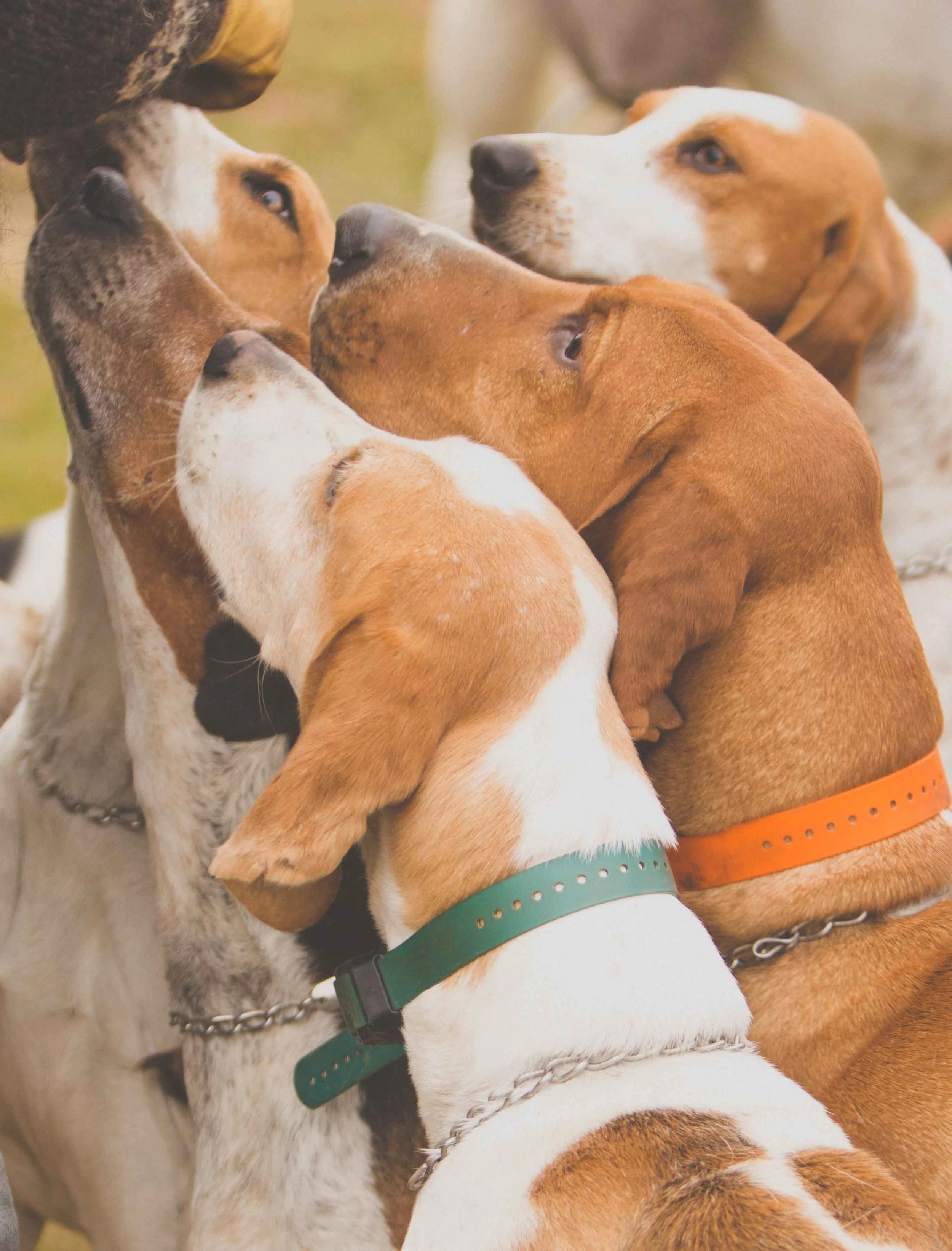The Kennels
The Norfolk Hunt kennels are the oldest kennels in America still in current use. The kennel buildings were constructed around 1900, when the Wardner Farm, on Centre Street in Dover, was purchased by the Club. Norfolk's foxhounds were moved from the Dedham Polo Club - where they had been kept since 1896 - to the newly built facility, which continues to be used today.
The layout of the kennels was so well-designed it has changed little since the turn of the twentieth century. The hounds live in three lodges, each of which has a large, attached, outside enclosure. The kennels also include a feeding room, a whelping room, two runs for bitches in heat and a puppy yard. Vents in the ceilings keep the kennels cool in summer, and when closed, warm in winter. A 1911 photo in the book, "The Norfolk Hunt: One Hundred Years of Sport," shows the Norfolk hounds setting out for a hunt towards Centre Street; the kennel building in the background looks just as it does today.
The Role of the Hound
Foxhounds are a core element of any Hunt Club and watching the hounds work is the key to the sport itself. It is important to understand, foxhunting is a sport in which a rider uses a horse to keep up with, and observe, the hounds at work. Foxhounds have been bred for many centuries to hunt by scent, their noses have been refined to a point that they should be able to discern the trail of one fox from that of another. Good foxhounds can stick to the scent of the fox they are hunting, even if it crosses the path of a different fox. The Norfolk Hunt's hound pedigrees can all be traced to the beginning of North American foxhunting.
Norfolk keeps about 25 hounds that hunt regularly, as well as a few older hounds who have finished their working life. The Club usually breeds one litter of puppies every year. Tradition dictates puppies are named using their mother's initial letter (i.e. Pancake, Pumpkin, Paula). Norfolk's hound puppies begin exercising with the adult hounds as soon as they are of comparable size -- about 4 months old—and start to go hunting at about 12 to 14 months of age.
Until 1932, Norfolk hunted artificial scent for the main part of the season. The Hunt then traveled to Cape Cod and hunted live foxes during the first week of December. For many decades, Norfolk has used only artificial scent, so routes can be carefully planned to effectively use the hunt country and avoid busy roads and developments.
Norfolk's foxhounds are exercised daily, walking out with people on foot. The hounds hunt three days a week during the season—approximately three months in the fall and one month in the spring -- with riders following on horseback.

